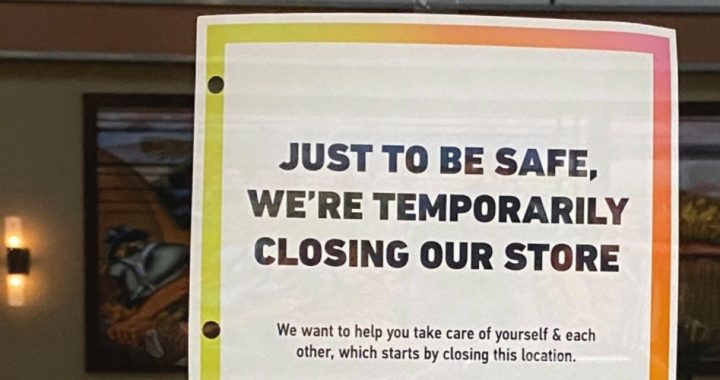
A top epidemiologist says the lack of sound data and evidence on the extent of the coronavirus pandemic might lead to catastrophically poor decisions on the part of politicians and public health officials.
John P.A. Ioannidis, a doctor, epidemiologist, and co-director of Stanford’s Meta-Research Innovation Center, warned this week that “we are making decisions without reliable data” that could lead to disastrous results including civil unrest and war.
Epidemiology is a field concerned not with curing diseases per se, but instead the data-driven study of why and how far they spread and who gets them.
In fact, he wrote at STAT, a website devoted to science journalism, despite the daily tally of increasing cases, the majority of infections have likely been missed, which means public safety and health measures taken so far might, long term, be counterproductive.
Data Unreliable
The “once-in-a-century pandemic … may also be a once-in-a-century evidence fiasco,” he wrote of the battle against COVID-19, the name given to the disease caused by the SARS-CoV-2 virus.
Despite the rapid spread of the disease, Ioannidis wrote, neither scientists nor politicians have enough hard data to make the policy decisions they have made:
We lack reliable evidence on how many people have been infected with SARS-CoV-2 or who continue to become infected. Better information is needed to guide decisions and actions of monumental significance and to monitor their impact.
Draconian countermeasures have been adopted in many countries. If the pandemic dissipates — either on its own or because of these measures — short-term extreme social distancing and lockdowns may be bearable. How long, though, should measures like these be continued if the pandemic churns across the globe unabated? How can policymakers tell if they are doing more good than harm?
Vaccines or affordable treatments take many months (or even years) to develop and test properly. Given such timelines, the consequences of long-term lockdowns are entirely unknown.
One reason the lockdowns might be a bad idea, again, is the lack of reliable data about how many people actually have the disease.
Those numbers are “utterly unreliable,” he wrote, and most infections are not being recorded, despite the daily counts from top scientific institutions.
Given the limited testing to date, some deaths and probably the vast majority of infections due to SARS-CoV-2 are being missed. We don’t know if we are failing to capture infections by a factor of three or 300 [emphasis added]. Three months after the outbreak emerged, most countries, including the U.S., lack the ability to test a large number of people and no countries have reliable data on the prevalence of the virus in a representative random sample of the general population.
This evidence fiasco creates tremendous uncertainty about the risk of dying from Covid-19. Reported case fatality rates, like the official 3.4% rate from the World Health Organization, cause horror — and are meaningless. Patients who have been tested for SARS-CoV-2 are disproportionately those with severe symptoms and bad outcomes. As most health systems have limited testing capacity, selection bias may even worsen in the near future.
Using the “closed population” on the Diamond Princess cruise ship as starting point, and accounting for the age of the deceased and their possible underlying health problems, Ioannidis concluded that “reasonable estimates for the case fatality ratio in the general U.S. population vary from 0.05% to 1%.”
A difficulty in measuring the death from SARS-CoV-2 is this: even “mild” coronaviruses that cause colds might cause ‘several thousands of deaths every year worldwide, though the vast majority of them are not documented with precise testing. Instead, they are lost as noise among 60 million deaths from various causes every year.”
As well, he wrote, “in some people who die from viral respiratory pathogens, more than one virus is found upon autopsy and bacteria are often superimposed. A positive test for coronavirus does not mean necessarily that this virus is always primarily responsible for a patient’s demise.”
Lockdowns Might Backfire
Ioannidis believes regular, random testing is the only way to estimate the prevalence of the Chinese Virus.
And he cautioned:
In the absence of data, prepare-for-the-worst reasoning leads to extreme measures of social distancing and lockdowns. Unfortunately, we do not know if these measures work. School closures, for example, may reduce transmission rates. But they may also backfire if children socialize anyhow, if school closure leads children to spend more time with susceptible elderly family members, if children at home disrupt their parents ability to work, and more. School closures may also diminish the chances of developing herd immunity in an age group that is spared serious disease.
Flattening the curve to avoid overwhelming the health system is conceptually sound — in theory. A visual that has become viral in media and social media shows how flattening the curve reduces the volume of the epidemic that is above the threshold of what the health system can handle at any moment.
Yet if the health system does become overwhelmed, the majority of the extra deaths may not be due to coronavirus but to other common diseases and conditions such as heart attacks, strokes, trauma, bleeding, and the like that are not adequately treated. If the level of the epidemic does overwhelm the health system and extreme measures have only modest effectiveness, then flattening the curve may make things worse: Instead of being overwhelmed during a short, acute phase, the health system will remain overwhelmed for a more protracted period. That’s another reason we need data about the exact level of the epidemic activity.
Ioannidis also warned, and quite reasonably so, that no one knows how long “social distancing measures and lockdowns can be maintained without major consequences to the economy, society, and mental health.”
Aside from the financial wreckage, he warned of “unrest, civil strife, war, and a meltdown of the social fabric.”
Thus, he wrote, “we need unbiased prevalence and incidence data for the evolving infectious load to guide decision-making.”
Photo: AP Images
R. Cort Kirkwood is a longtime contributor to The New American and a former newspaper editor.



